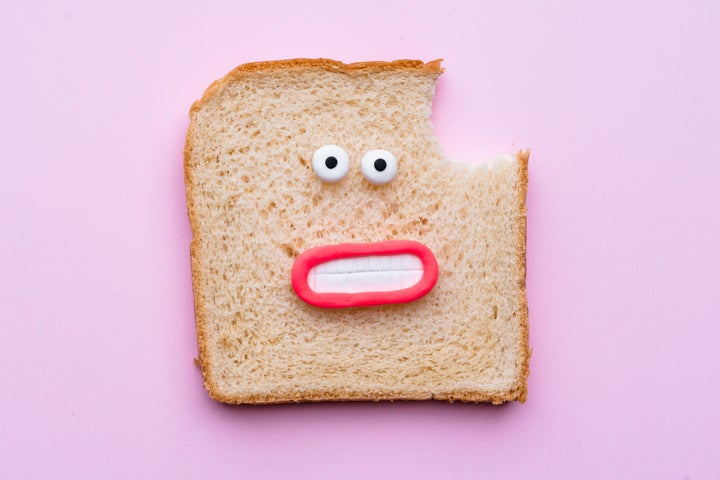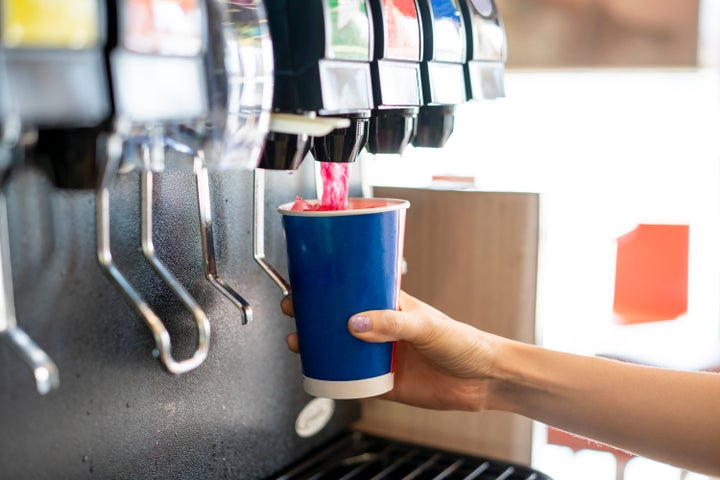
From a young age, we’re taught that eating vegetables, fruit, lean meats and other nutritious items is crucial for our health. And that rings true today, no matter how old you are.
But experts say that we may not actually know what we are putting in our bodies every day, and some of the items on nutrition labels are suspect — with Europe even banning certain ingredients used in the United States.
As with all aspects of the law, regulations vary from country to country, which is why certain food additives that are permitted one place may be prohibited elsewhere.
In the U.S., a few issues make additive approvals a little more lax. Among them is a loophole known as GRAS — meaning “generally recognized as safe” — which “came into place due to the 1958 Food Additives Amendment,” according to Thomas Galligan, the principal scientist for food additives and supplements at the Center for Science in the Public Interest, or CSPI.
“The food industry is allowed to self-determine that a substance is generally recognized as safe,” allowing it to bypass the Food and Drug Administration, he said, adding that the European Union has no equivalent process.
Additionally, “in the U.S. we have a large number of additives that are grandfathered into the food supply,” said Dr. Sheela Sathyanarayana, an associate professor of pediatrics and adjunct professor in the department of environmental and occupational health sciences at the University of Washington.
This means that some of the chemicals allowed in our food have not actually been reviewed for quite some time.
Europe, on the other hand, somewhat recently conducted a safety review of all additives in use, Sathyanarayana said. In the U.S., “we have no regulatory mechanism to go back and evaluate all the additives in the food supply.”
“It is a commonly held belief that if small amounts are used, then it won’t be harmful. But that is not true.”
- Dr. Sheela Sathyanarayana
Certain additives should immediately raise red flags — including those not allowed in the EU. Here, experts share which ones to avoid.
Titanium Dioxide
“A recent example of a food additive being banned in the EU but allowed in the U.S. is titanium dioxide,” Galligan said.
The European Food Safety Authority banned the ingredient last year because of concerns about potential connections to cancer, but the FDA has “not taken any action on titanium dioxide following the EFSA assessment,” he said.
European research determined that while the data is not conclusive, a cancer link could not be ruled out, which makes this additive concerning for daily use.
In the U.S., titanium dioxide is commonly used in salad dressings, coffee creamer and some white sauces.
Azodicarbonamide
Azodicarbonamide, sometimes found in bread and rolls, is used as a bleaching agent and flour improver, according to CSPI.
The watchdog has recommended avoiding this additive because of two chemicals that can form when bread bakes.
The first is semicarbazide, “which caused cancers of the lung and blood vessels in mice,” CSPI said. The second is urethane, a known carcinogen.
Brominated Vegetable Oil
CSPI said that brominated vegetable oil is used to give a cloudy appearance to soft drinks like Mountain Dew, but the additive has been a topic of concern since the 1970s.
Brominated vegetable oil “is still poorly tested” today, the CSPI website said. It has been found to leave a residue on body fat, and it was linked to the deaths of two people who consumed very large amounts of the ingredient.

Potassium Iodate
Bread and rolls in the U.S. may also contain potassium iodate, a chemical intended to strengthen the foods, according to CSPI.
The additive is a kind of iodine, and studies show that too much iodine can cause issues like hypothyroidism.
In fact, the World Health Organization has warned against the use of potassium iodate in flour since 1965.
Potassium Bromate
You may find potassium bromate on the ingredient lists for your go-to sliced wheat bread or flour tortillas, according to the nonprofit Environmental Working Group.
Bromate is known to cause cancer in animals, and the small amount that is used to create a more appealing crumb structure could have adverse effects on humans, too.
Food Dyes Aren’t Banned But Come With A Warning Overseas
“While not quite a ban, the EU requires that foods containing certain synthetic food dyes bear a warning label stating ‘may have an adverse effect on activity and attention in children,’” Galligan said. “But no such warning label is required in the U.S.”
Specifically, foods with synthetic dyes like Yellow No. 5, Yellow No. 6 and Red No. 40 must have this label in the EU. Common foods with dyes include gelatin, fruit snacks, ice pops, bright candy and fruit juices.
The FDA still classifies food dyes as “very safe,” Galligan said. But he added that the “state of California finished their comprehensive report about food dyes” in 2021, with its findings suggesting that “synthetic food dyes can cause or exacerbate adverse neurobehavioral outcomes in some children.”
This All Probably Feels Alarming, And Rightfully So
“This is concerning because some of these additives may be toxic and affect human health,” Sathyanarayana said. “It is a commonly held belief that if small amounts are used, then it won’t be harmful. But that is not true.”
Even a little bit of these additives can be toxic, she said — and people may be exposed to these harmful additives through multiple food items in one day.
If You’re Concerned, You Can Protect Yourself
To stay informed, check the safety of various additives on CSPI’s list of “chemical cuisine ratings.”
Folks can also prioritize fresh ingredients like fruit and vegetables to avoid the additive issue altogether, Sathyanarayana said.
“When it’s not possible to buy fresh, try to look at ingredient labels and choose products with ingredients you know or those with small numbers of ingredients,” she added. This way, you’ll know what is going in your body.